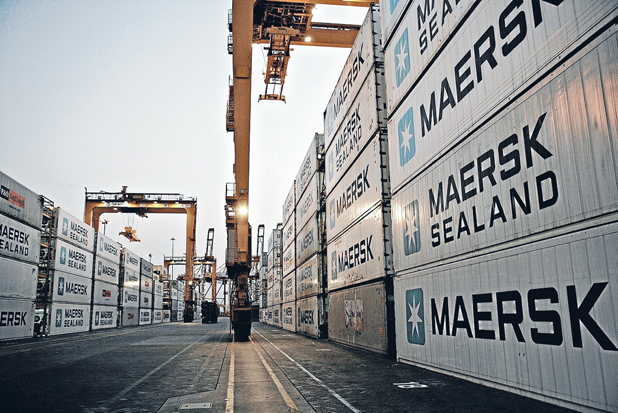Maersk Line recently announced that it will be turning its current intra-Americas service into an independent unit. This unit will operate under the name “SeaLand,” – a throwback to the name of a brand founded by shipping pioneer Malcom McLean.
The new brand will run shipments throughout North, South, and Central America, and extend its reach as far south as Chile and Argentina. It will offer services to commercial shippers as well as carriers that don’t operate vessels, and will also function as a feeder service to Maersk and other liner carriers.
From the outset, the line will have 30 ocean liners at its disposal, the majority of which will serve lines between the Americas, Asia, Europe, and the Middle East. There will, however, be a few set aside for dedicated service between the U.S. and Central and South America.
The company handles about 400,000 TEUs on commercials, as well as around 250,000 TEUs on feeders – the majority of which is for Maersk. However, SeaLand hopes to diversify its business and seek more partnerships with other carriers. Their hope is to be the go-to for good, consistent feeder service into some of the smaller ports.
SeaLand is at a sizeable advantage as it gets started in the industry because of its backing by the powerful Maersk Line. Maersk is responsible for 16% of Latin American business and is the second largest carrier in the region. Furthermore, it has a 6% share of the intra-Asia trade and claims 12% of the intra-Europe trade.The company has set up SeaLand to operate with a similar structure to its other regional carriers, MCC Transport and Seago Line.
That being said, SeaLand will nonetheless face stiff competition from regional carriers who are quite attached to their intra-America routes and won’t give up business easily. Companies like Crowley, Seaboard Marine, SeaFreight, Tropical, and King Ocean are already crowding the shipping industry in Central America, the Caribbean, and parts of South America. And in other parts of South America, the new line will have to deal with shipping giants like Hapag-Lloyd, CSAV, Hamburg Sud, and Mediterranean Shipping Co.
Even so, SeaLand will employ the solid strategy of attempting to capitalize on the lucrative relationships Maersk has with multinational companies around the world. The line will likely have the best luck on South America’s west coast and parts of Central America where there are more opportunities for new entrants.
It’s likely that SeaLand will start with the base cargo of Maersk, which is currently given to a number of other smaller feeder operators. These feeder operators should be prepared to lose business when the cargo is taken from their operations and given to SeaLand. Other shippers in the region should also be nervous about freight rates dropping – as is typical when more tonnage comes into the trade.
The goal is for SeaLand to have an organizational structure in place by the end of this summer, although they have yet to choose a location for their headquarters. Prime candidates include somewhere in South Florida, Texas, or Panama. To start, the line will have about 50 staff at headquarters and another almost 200 elsewhere in the Americas. All operations will be labeled under a Maersk bill of lading until January 1, 2015, when responsibility will officially shift to SeaLand.
Even then, the company will continue to take advantage of a number of Maersk’s services, including its global service centers, finance operations, land-side operations, and human resources department. This is understandable, as Maersk has built a name for itself partially by emphasizing service and close connections with customers. By staying attached to some of Maersk’s basic operations, SeaLand can quickly build a reputation for itself in the same way.
SeaLand will also take cues from Maersk’s MCC Transport and Seago lines by focusing on shorter routes. This will make it even more important for the company to respond quickly to customer concerns, make decisions immediately, and ensure that their 3-4 day shipments are nothing but smooth sailing. Setting up a trade management team with experts dedicated to specific regions will be crucial to their success. This will allow them to simultaneously increase their knowledge levels, meet customer expectations, and keep up with sales activity.
The new line already has two main targets in mind: to increase their share of the market for refrigerated goods – a busy industry in many Central and South American countries – and to convert over-the-road shipments to short-sea transport. If they can convince some of the bigger companies in the area to trust them with their shorter intra-America shipments rather than taking to the road, they will further increase their chances of success in the industry.
What will come of SeaLand in the long-term has yet to be seen, but one thing’s for sure: shippers and carriers serving North, Central, and South America should pay close attention.




